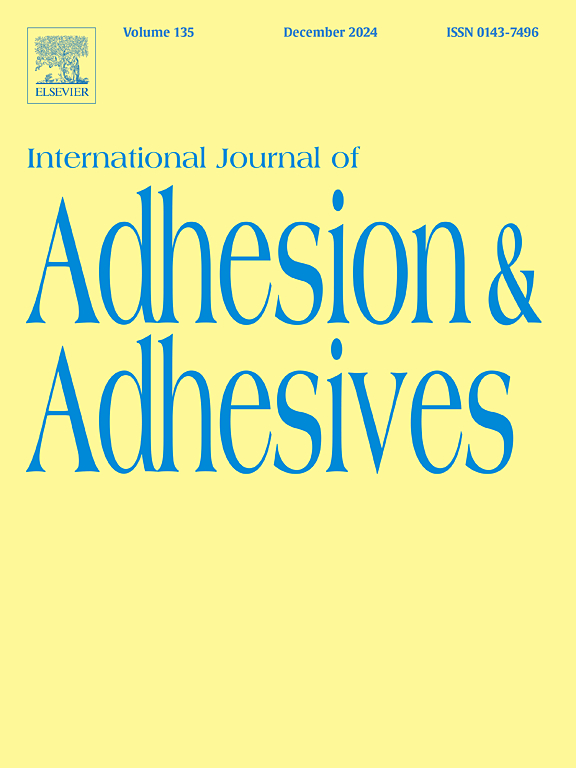Effect of hydrofluoric acid etching and resin cement on the flexural strength of a leucite-reinforced glass ceramic with simulating CAD-CAM milling
IF 3.2
3区 材料科学
Q2 ENGINEERING, CHEMICAL
International Journal of Adhesion and Adhesives
Pub Date : 2025-01-21
DOI:10.1016/j.ijadhadh.2025.103946
引用次数: 0
Abstract
Objectives
To evaluate the effect of hydrofluoric acid etching and resin cement coating on the surface roughness and biaxial flexural strength of a leucite-reinforced glass ceramic ground with a diamond bur, following a protocol simulating CAD-CAM milling.
Methods
Leucite-reinforced glass ceramic (IPS Empress CAD, Ivoclar AG) discs were prepared and divided into four groups (n = 20): polishing (P); grinding (G); grinding followed by 5 % hydrofluoric acid application for 60s (GH); and grinding followed by 5 % hydrofluoric acid (HA) for 60s, silane, and resin cement application (GHRC). The discs were aged in distilled water at 37 °C for three months and subjected to surface roughness analysis and biaxial flexural strength testing (ISO 6872:2015). Data were compared using the Kruskal-Wallis test followed by Bonferroni-corrected multiple comparisons (α = 0.05). The flexural strength data were also subjected to Weibull analysis to determine the Weibull modulus.
Results
Grinding the ceramic surface with an extra-fine diamond bur increased the roughness and reduced the fracture strength when compared to the polishing group. Hydrofluoric acid (GH group) produced roughness values similar to those of the G group, without affecting the material's flexural strength (p > 0.05). Resin cement coating (GHRC group) was able to significantly increase the fracture strength, when compared to the GH group (p < 0.001), reaching similar values to the polishing group (p = 0.138). Weibull modulus of the P group was significantly lower than the G group.
Conclusion
Resin cement reversed the damage from grinding, restoring flexural strength to levels similar to the polished group. Hydrofluoric acid did not affect flexural strength.
求助全文
约1分钟内获得全文
求助全文
来源期刊

International Journal of Adhesion and Adhesives
工程技术-材料科学:综合
CiteScore
6.90
自引率
8.80%
发文量
200
审稿时长
8.3 months
期刊介绍:
The International Journal of Adhesion and Adhesives draws together the many aspects of the science and technology of adhesive materials, from fundamental research and development work to industrial applications. Subject areas covered include: interfacial interactions, surface chemistry, methods of testing, accumulation of test data on physical and mechanical properties, environmental effects, new adhesive materials, sealants, design of bonded joints, and manufacturing technology.
 求助内容:
求助内容: 应助结果提醒方式:
应助结果提醒方式:


